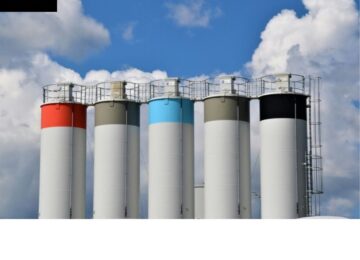Anupama Nair
Micro-economics focuses on the role consumers and businesses play in the economy, with specific attention paid to how these two groups make decisions. “The decisions include when a consumer purchases a good and for how much, or how a business determines the price it will charge for its product”. In fact, micro-economics examines smaller units of the overall economy.
How do companies decide what price to charge for their products? Why are some people willing to pay more for a product than others? How do your decisions play into how corporations price their products? The answer to all of these questions and many more is what we call micro-economics.
Micro-economics breaks down into the following doctrines:
- Individuals make decisions based on the concept of utility. In other words, the decision made by the individual is supposed to increase the individual's happiness or satisfaction and the concept is called rational behavior or rational decision-making.
- Businesses make decisions based on the competition they face in the market. The more competition a business faces, the less flexibility it has in terms of pricing.
- Both individuals and consumers take the opportunity cost of their actions into account when making their decisions.
Total and Marginal Utility
It is believed that how a consumer makes a decision is due to the concept of individual benefit, also known as utility. The more benefit or use a consumer feels a product has, the more the consumer is willing to pay for the product. Consumers often allocate different levels of utility to different goods, creating different levels of demand. Consumers have the choice of purchasing any number of goods, so utility analysis often looks at marginal utility, which shows the satisfaction that one additional unit of a good brings. Total utility is the total satisfaction the consumption of a product brings to the consumer.
The decrease in satisfaction the consumer feels from additional units is referred to as the Law of Diminishing Marginal Utility. While the law isn't really a law in the strictest sense, it does help illustrate how resources spent by a consumer, such as the extra money needed to buy that seventh piece of pizza, could have been better used elsewhere.
Elasticity of Demand
Elasticity is a concept in economics that talks about the effect of change in one economic variable on the other. Elasticity of Demand, measures the effect of change in an economic variable on the quantity demanded of a product. There are several factors that affect the quantity demanded for a product such as the income levels of people, price of the product, price of other products in the segment, and various others.
Elasticity of Supply
The elasticity of supply establishes a quantitative relationship between the supply of a commodity and it’s price. Hence, we can express the numeral change in supply with the change in the price of a commodity using the concept of elasticity. Elasticity can also be calculated with respect to the other determinants of supply. However, the major factor controlling the supply of a commodity is its price. Therefore, we generally talk about the price elasticity of supply. The price elasticity of supply is the ratio of the percentage change in the price to the percentage change in quantity supplied of a commodity.
Opportunity Costs
When consumers or businesses make the decision to purchase or produce particular goods, they are doing so at the expense of buying or producing something else, which is referred to as the opportunity cost. If an individual decides to use a month's salary for a vacation instead of saving, the immediate benefit is the vacation on a sandy beach, but the opportunity cost is the money that could have accrued in that account in interest, as well as what could have been done with that money in the future. While, illustrating how opportunity costs influence decision making, economists use a graph called the production possibility frontier (PPF).
A well-known example of the PPF in practice is the ‘guns and butter’ model, which shows the combinations of defense spending and civilian spending that a government can support. While the model itself oversimplifies the complex relationships between politics and economics, the general idea is that the more a government spends on defense, the less it can spend on non-defense items.
Market failure and competition
While the term market failure might conjure up images of unemployment or a massive economic depression, the meaning of the term is in fact, very different. Market failure exists when the economy is unable to efficiently allocate resources. This can result in scarcity, a glut or a general mismatch between supply and demand. Market failure is frequently associated with the role that competition plays in the production of goods and services, but can also arise from asymmetric information or from a misjudgment in the effects of a particular action called as externalities.
The level of competition a firm faces in a market, as well as how this determines consumer prices, is probably the more widely-referenced concept. There are four main types of competition:
- Perfect Competition: A large number of firms produce a good, and a large number of buyers are in the market. Because so many firms are producing, there is little room for differentiation between products, and individual firms cannot affect prices because they have a low market share. There are few barriers to entry in the production of this good.
- Monopolistic Competition: A large number of firms produce a good, but the firms are able to differentiate their products. There are also few barriers to entry.
- Oligopoly: A relatively small number of firms produce a good, and each firm is able to differentiate its product from its competitors. Barriers to entry are relatively high.
- Monopoly: One firm controls the market. The barriers to entry are very high because the firm controls the entire share of the market.
The price that a firm sets is determined by the competitiveness of its industry, and the firm's profits are judged by how well it balances costs to revenues. The more competitive the industry, the less choice the individual firm has when it sets its price.




























